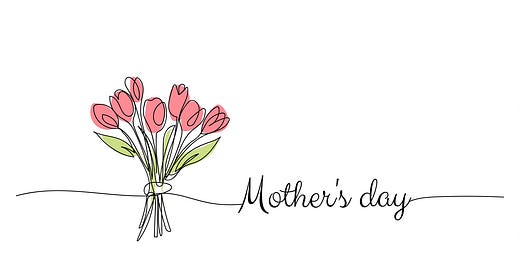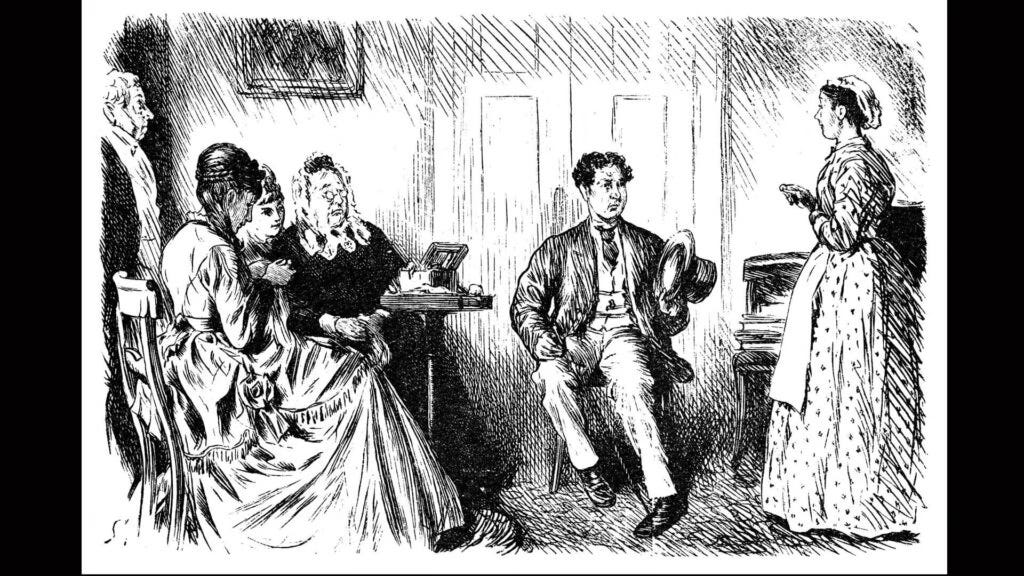On Mother's Day
For women looking for the greatest of all human challenges, try being a good mother. It will test you in ways no classroom learning can prepare you. And we thank and celebrate mothers for it.
While teaching at Claremont McKenna College, now many years ago, I developed a module in one of my classes on the history of marriage law in the United States.
We contrasted early American marriage laws, and the culture and habits surrounding those laws, with modern, no-fault divorce laws. (The first state to adopt no-fault divorce law was California, for those who don’t know, courtesy of Republican Governor Ronald Reagan, in 1969.)
Both earlier fault divorce laws—under which a spouse had to prove actual violations of rights in order to be granted a divorce—and more modern no-fault divorce law—according to which one spouse can terminate a marriage for any reason, or no reason at all—create certain incentives, and disincentives.
Incentives and Disincentives
Under older fault laws, a marriage was difficult to get out of, which incentivized great caution about getting into a marriage. This caution, or selectivity—this emphasis on being discriminating about whom to marry—incentivized a culture of courtship, which was far more than mere dating.
Within a culture of courtship, typically, young men would compete to demonstrate who among them was most virtuous, most responsible, and most likely to be a good husband and a providing, caring father.
The bar for men was raised by women and their watchful families. Many men responded by striving to improve themselves and be better in order to pursue the woman of their dreams.
While divorce was possible in most states in the early periods of the American republic, it was also costly and quite painful for spouses, especially when children were involved.
It wasn’t uncommon for courts to grant divorces with the condition that children go with their father. At a time when most fathers were used to working outside the home and most mothers were used to be at home with her children, this was a hefty price to pay—for the both the wife and the husband—for a divorce.
How was a man employed outside the home going to raise children? What mother would accept not being at home with her kids?
The view of many courts was: “You, the parents, brought these children into the world—if you’re not going to raise them together, then your lives are going to be uncomfortable.” Many married parents preferred to work out their differences and figure out a way to raise their children together rather than suffer the unpleasant disincentives involved in most divorce decrees.
The rub with the older system of marriage is that some women (and men) ended up trapped in miserable marriages. That certainly happened, likely more often than we’ll ever know. To boot, many talented women faced great obstacles and had few opportunities to exercise their talents and do what they enjoyed.
The new system, based on no-fault divorce, transformed marriage into something closer to dating, making it much easier to exit than marriage was under fault laws. No-fault divorce (coupled with easy access to contraception and abortion) also transformed the old culture of courtship into the modern culture of dating (and postmodern culture of “hooking up” and “friends with benefits”).
Modern fault-law marriage made it easier for women (and men) to get out of bad marriages, and helped to open all kinds of professional and cultural opportunities for women that didn’t used to exist. It also resulted in more children than ever before growing up not knowing their fathers.
In general and in summary: Old fault laws and the culture of courtship and strong marriages they fueled were good for children, not so good for some women; no-fault laws and the (post)modern culture of dating and fleeting relationships are good for women who prioritize independence and professional opportunities, not so good for many children.
Neither system is perfect; neither is without costs; both feature outliers and exceptions to the rule.
Does Venus Want To Be Mars?
These classroom discussions inevitably would turn to subjects of men and women, what they do, what they want, what they expect, what differences there might be between the sexes other than genitalia and chromosomes, what opportunities and responsibilities men and women have now versus what they had in the past—within and outside the context of marriage—and other related subjects.
In these marriage-related lectures, no students were bored or uninterested. Or quiet. They all had opinions they wanted to share. It was obvious these subjects were important to them.
Again, this was when I was teaching in Claremont, California, in the late 1990s and early 2000s. Curiously, the young women were the ones quickest to dismiss or denigrate motherhood as a meaningful or important activity. So I’d push back and defend motherhood.
[Picture that in your mind: Women insisting being a mother isn’t important, certainly not noble, and yours truly arguing the opposite!]
My argument went something like this:
Any man can do a job at some business. Any man can push papers around, file reports, go to meetings, fix a machine, dig a ditch. And likely most women can do many jobs that men can do—which isn’t very impressive because it’s not a very high hurdle to overcome.
If you’re a woman and you want to demonstrate to yourself or to the world that you can do what many men do routinely, knock yourself out. No one is stopping you. Go ahead. Do what men do.
Challenge of Motherhood
But, I would continue, motherhood is something different than the work men typically do. Excellent mothering is a unique challenge of which only women are capable, and among them, only some.
There is a natural, biological, even chemical and hormonal bond between a mother and her child that cannot be replicated or matched. There is nothing like it in the world. And the challenge of being an excellent mother is unlike any other human challenge.
The material with which a mother begins to work is, usually, a 7, 8, or 9 pound natural, narcissistic tyrant who cares for no one.
A baby doesn’t care when anyone else is tired, sick, or hungry. A baby is going to cry and scream and demand whenever it wants something, sometimes even when it doesn’t want something. Anyone who’s had a colicky baby knows exactly what I mean.
A baby knows nothing. A baby can do nothing. No other animal on Earth is so utterly helpless, so dependent, at birth, as a newborn human baby.
Within a window of opportunity spanning approximately 16, 18, or 20 years, a mother works tirelessly to transform that little tyrant into a mature, reasoning, responsible, thoughtful, loving, productive, self-reliant human being.
There are no guide books to tell a mother how to do or achieve this. Or, rather, there are guide books, but none of them are very good because every child is so different in so many ways.
Nobility of Motherhood
That’s why mothering requires unmatched energy, patience, and creativity. And endless, unconditional love. I’m not saying fathers have nothing to contribute to the raising of children. Of course they do. Yet mothering is distinct work that only women can do well. That’s why there’s a holiday set aside to remember and celebrate mothers.
It doesn’t mean fathers are unimportant. It means there’s something unique and uniquely important about what mothers do, and it’s ok that we set aside a day to remember that.
The result, the reward, of motherhood is something so noble, so profoundly beautiful, so inseparable from the mystery of human nature itself, that it’s impossible to compare motherhood to any raise, promotion, or title earned at any typical job.
So let us not even try.
For women looking for the greatest of all human challenges, try being a good mother. It will test you in ways for which no classroom learning can prepare you. It will expand your knowledge; it will make you wiser; it will draw from you reserves of energy you never knew you had.
Your children will be better for it. You will be better for it. The world will be better for it.
And for those women who have already dared to undertake this monumental task of being not merely a mother, but being a good mother—for taking on this incredible task that humbles the greatest of men and brings them to their knees—I say: Happy Mother’s Day To Each and Every One Of You!










Motherhood is definitely challenging. I had a child back in 1984 and then two more in 2000. The times changed, the culture changed and even though I raised them all, they had very different personalities. Even the twins have different attitudes, one is very independent and hates to be told what to do and the other is more compliant and willing to help out. Even though they all attended the same high school, the eldest was allowed to be himself, but the twins were required to be like all the other kids and conform. I would homeschool all my kids if I had to do it again. It was much more relaxed when I went to high school in the 80s, and I had a lot more fun than my twins did. They hated school.